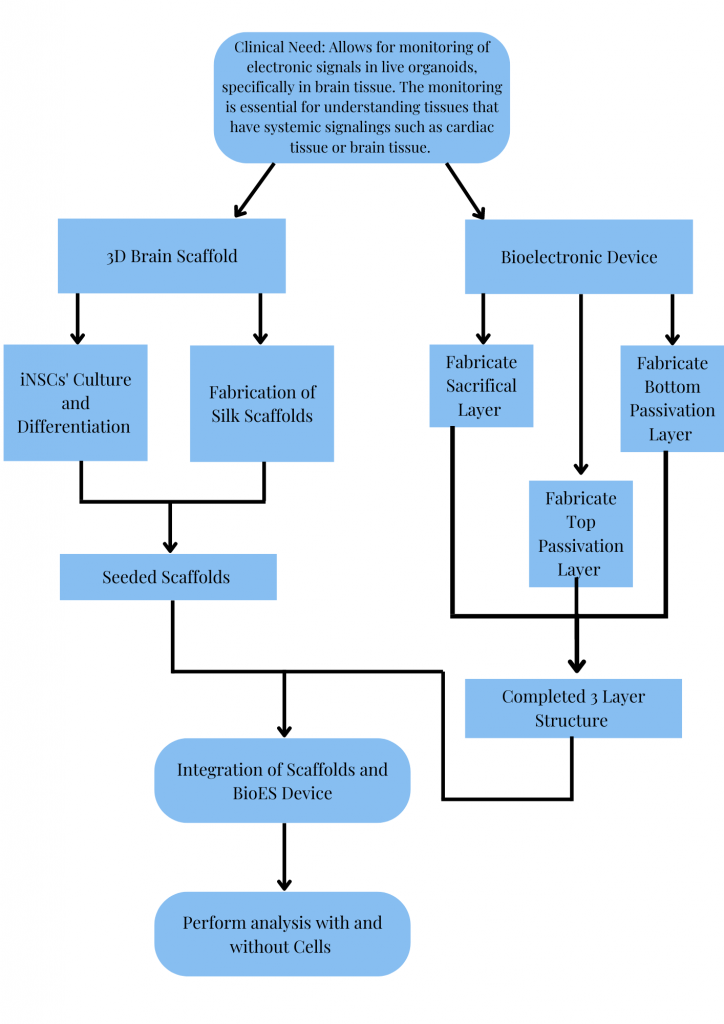The objective of the project is to embed a bioelectronic device into a 3D brain tissue model. We plan for the neurons(iNSCs) to grow in the scaffold and for the bioelectronic device to be integrated and form a hybrid brain tissue. Once this is accomplished we expect to be able to measure neural activity.
The bioelectronic sensor we plan to use for our projects is a flexible scaffold that is designed to interface with neural cells. The sensors record real-time electrophysiology of electric active tissue. These readings allow us to characterize action potentials and cellular networks. Additionally, we can monitor ion channel states, and evaluate neural pathways. Specifically, the sensor is attached to a multielectrode array that was designed in the Timko Lab. The multi-electrode array is rigid so it will not contour to the tissue meanwhile the sensor is flexible to allow for it to integrate with the active tissue, promoting cell-to-cell communications. Our main focus is the integration of the hybrid brain model. Separately these two innovations are well-known and researched however it’s unknown how these would work together jointly. We expect that sandwiching the scaffold around the sensors would promote the growth of neurons around the sensors. However, there is not much research on hybrid model integration.
Currently, we are still exploring which methods will be applied for the integration of both parts of this project. We will be using soldering to connect the bioelectronic device to the PCP board to measure the voltage of the neurons.
